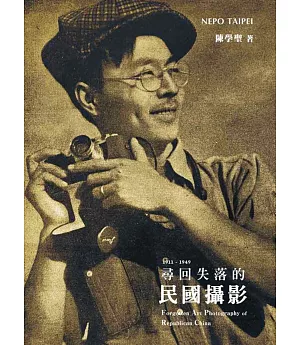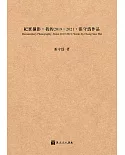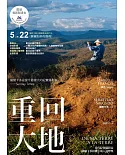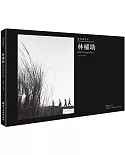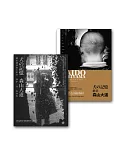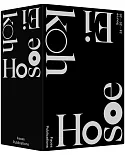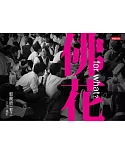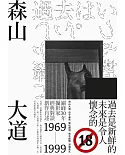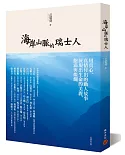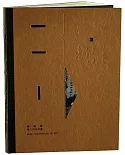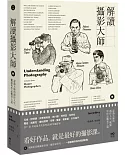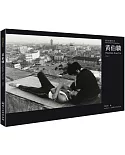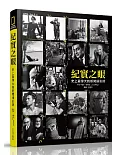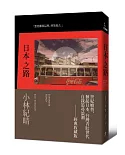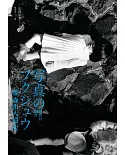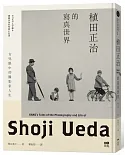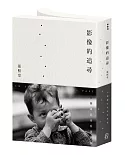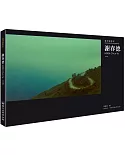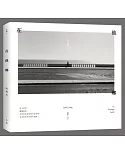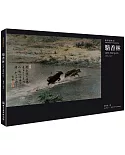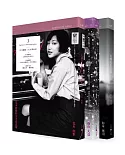當今每人人手一支智慧型手機,手指一滑,即可記錄人生的每個片段,無論是開懷大笑、悲傷時刻,抑或只是天空中的一朵雲…..影像紀錄已是生活中不可或缺的。
但你知道攝影在晚清時期就已傳入中國嗎?並且在短短的數十年光陰裡蓬勃發展。
當台北時下所謂的「文青」聚集在巷弄間的咖啡廳裡、文創園區裡外拍、在部落格裡書寫一篇又一篇圖文網誌…..你可曾想過在民國初年,中國軍閥割據,民不聊生,但洋人佔據的上海彷彿汪洋中一座小島,庶民文化發光發熱,當時「文青」的生活隨著西方文化的衝擊和引進有了火花,更顯多采多姿。
想像當年文人墨客不免風花雪月,尋著相館的妓女相片裡巧笑倩兮的身影,到大都會娛樂場所做客。名妓女十八般武藝樣樣行,一會兒唱個小曲兒助興,一會兒搬刀耍槍,一會兒坐你身邊陪你在戲院看戲,輕聲細語地和你討論著台上的故事。
他們也遊山玩水,看山又看水,看著杭州西湖水波粼粼,上面一對鵝緩慢游在水面,日落西邊,明月升起,遠山疊影,一景一物倒映在水面上。或是看著落日孤帆、秋天的露水,以物思人,表達自已高潔的情操。
並且挑戰社會的風俗,追求人體的美,邀請人體模特兒,擺弄各種姿勢來展現體格的美,甚至可以在當時雜誌上看到「世界女性人體的比較」這樣聳動的專題報導。
這就是中國西元1911至1949年間知識份子的片段吉光片羽,一張張照片,述說著當時「文青」有高度的文藝態度,對美的追求,以及對未來的憧憬。然而,隨著中日戰爭的開打、內戰,以致文革的大騷動,血色的現實生活,讓人遺忘了曾經有一群人在那樣的時空裡創造了中國影像前所未有的輝煌。
作者最終希望藉由此書為大家開啟那塵封已久的百寶箱,將那陸沉一甲子的文明重現我們眼前,讓現今仍舊身處在『民國』的我們了解到少了那段時期的民國,我們是不完整的。
本書特色
一百二十多張極為珍貴的照片
至今仍為少數人才能接觸的到,深鎖在中國大陸圖書館的資料櫃中。這些影像檔案幫助讀者了解那個時代的文青藝術活動,以及當時社會的攝影氛圍。
溫馨的美學視覺設計
本書由喜歡攝影、專攻美學視覺的吳美琪(Peggy),以豐富的感情和溫馨的方式來編排書內的影像,和諧了作者理性的文字,為本書帶來難得一見的生動與專業。
無可取代的攝影史研究成果
由同是使用繁體文字的台灣學者,對陸沉的民國攝影史做了堅實的分析與研究,同時使用繁體文字出版了此書,至此成為無可取代的成果。
專業推薦
林顯東(NEPO畫廊主持人)推薦
本書作者陳學聖博士靠著驚人的毅力及淵博的知識,以及他在收集相關資料時的難得際遇,終於在多年後完成《尋找失落的民國攝影》一書。
此書不僅將這段民國時期的影像藝術史做了詳盡且全面的研究與介紹,也揭開了形塑這個時期的人、照片、及視覺美學的秘密,希望能帶領攝影愛好者一窺其究竟。
作者介紹
作者簡介
陳學聖 Chen Hsueh-Sheng
現任
世新大學 圖文傳播暨數位出版學系 副教授
世新大學新聞傳播學院新聞攝影學程召集人
學歷
澳洲墨爾本大學哲學博士(Melbourne University/Art Faculty/PhD)
美國紐約大學藝術碩士(NYU/ICP Program/MFA)
國立台灣大學 造船暨海洋工程學系畢
經歷
行政院原住民族委員會“台灣原住民族百年影像展”及“鄧南光間諜相機的瞬間影像展”策展人
北京“中國攝影”雜誌專欄作者
新聞局金鼎獎評審委員
中央標準局專利審查委員
媒體攝影記者
研究領域
從1990年代投入數位影像創作與典藏研究,建立傳統暗房到數位影像的教學課程。
陳學聖 Chen Hsueh-Sheng
現任
世新大學 圖文傳播暨數位出版學系 副教授
世新大學新聞傳播學院新聞攝影學程召集人
學歷
澳洲墨爾本大學哲學博士(Melbourne University/Art Faculty/PhD)
美國紐約大學藝術碩士(NYU/ICP Program/MFA)
國立台灣大學 造船暨海洋工程學系畢
經歷
行政院原住民族委員會“台灣原住民族百年影像展”及“鄧南光間諜相機的瞬間影像展”策展人
北京“中國攝影”雜誌專欄作者
新聞局金鼎獎評審委員
中央標準局專利審查委員
媒體攝影記者
研究領域
從1990年代投入數位影像創作與典藏研究,建立傳統暗房到數位影像的教學課程。
目錄
序文 Foreword
前言 Introduction
Chapter 1
1913 年之前的中國攝影發展
The Development of Photography in China before 1913
1.1 攝影傳入中國
1.2 商業人像照相館的流行
1.3 本土攝影產業的發展
1.4 攝影與晚清的社會生活
1.5 晚清時期的業餘攝影: 1860 ~ 1911
Chapter 2
在 1937 年之前的業餘攝影及藝術攝影活動
Amateur and Art Photography before 1937
2.1 中國業餘攝影團體的開始
2.2 藝術攝影的興起
2.3 在新媒體中延續的文人畫傳統
2.4 保存「中國特質」
2.5 上海藝術攝影團體的興起
2.6 攝影藝術在上海藝文界的迴響
2.7 名人背書效應與 30 年代的攝影活動潮
Chapter 3
中國藝術攝影的商業化
The Commercialization of Chinese Art Photography
3.1 人像攝影 Portrait photography
3.2 女性名流肖像
3.3 人體攝影
3.4 遲來的現代性
Chapter 4
在傳播時代的藝術攝影
Art Photography in the Era of Mass Media
4.1 攝影在民國期刊中的發展
4.2 藝術攝影的《良友》
4.3《時代畫報》:攝影藝術的推手
4.4《大眾》與《美術生活》:在視覺傳播中的角度看藝術攝影
4.5 攝影雜誌與攝影產業
4.6 器材商支持的攝影雜誌
4.7 民國期刊對攝影藝術發展的影響
Chapter 5
在國難當頭的藝術攝影
Art Photography at a Time of National Calamities
5.1 戰火陰影下的攝影藝術
5.2 攝影者在戰火下的抉擇
結語 Conclusion
前言 Introduction
Chapter 1
1913 年之前的中國攝影發展
The Development of Photography in China before 1913
1.1 攝影傳入中國
1.2 商業人像照相館的流行
1.3 本土攝影產業的發展
1.4 攝影與晚清的社會生活
1.5 晚清時期的業餘攝影: 1860 ~ 1911
Chapter 2
在 1937 年之前的業餘攝影及藝術攝影活動
Amateur and Art Photography before 1937
2.1 中國業餘攝影團體的開始
2.2 藝術攝影的興起
2.3 在新媒體中延續的文人畫傳統
2.4 保存「中國特質」
2.5 上海藝術攝影團體的興起
2.6 攝影藝術在上海藝文界的迴響
2.7 名人背書效應與 30 年代的攝影活動潮
Chapter 3
中國藝術攝影的商業化
The Commercialization of Chinese Art Photography
3.1 人像攝影 Portrait photography
3.2 女性名流肖像
3.3 人體攝影
3.4 遲來的現代性
Chapter 4
在傳播時代的藝術攝影
Art Photography in the Era of Mass Media
4.1 攝影在民國期刊中的發展
4.2 藝術攝影的《良友》
4.3《時代畫報》:攝影藝術的推手
4.4《大眾》與《美術生活》:在視覺傳播中的角度看藝術攝影
4.5 攝影雜誌與攝影產業
4.6 器材商支持的攝影雜誌
4.7 民國期刊對攝影藝術發展的影響
Chapter 5
在國難當頭的藝術攝影
Art Photography at a Time of National Calamities
5.1 戰火陰影下的攝影藝術
5.2 攝影者在戰火下的抉擇
結語 Conclusion
序
作者序
會一頭栽入民國攝影史的研究領域其實是個偶然。在1994年從紐約回台後,經同事蔣載榮教授介紹,認識了《攝影天地》雜誌的主編湯思泮先生。承蒙湯老的厚愛,開始了一段每個月要為專欄交稿而發愁的日子。當時沒想到這個專欄會在大陸被轉載,也因此接到北京《中國攝影》雜誌的邀稿,又起一段冥思苦想的時日。後來訪問中國攝影家協會時,在該會檔案室看到許多民國時期的攝影史料。這些史料是編輯《中國攝影史》(1989年出版)的原始資料,親眼目睹這些七八十年前攝影前輩留下的足跡,心中感到十分震撼。為什麼這群人對攝影這麼有興趣?特別是在一個中國劇烈變動的時代?雖然時間久遠,但這些攝影前輩的事蹟卻令人感到似曾相識。隨著不斷在大陸各圖書館與檔案館的搜索,我慢慢了解攝影作為嗜好與創作形式在中國的發展過程,這些痕跡事實上在戰後兩岸的攝影活動中依然有深遠的影響。
2001年在《中國攝影》主編李波的協助下,我在北京與研究對象中少數仍在世的吳寅伯(1910-2004)先生見面。老先生當時已高齡九十一歲,記憶力竟仍驚人地好。我看到他放在馬口鐵餅乾盒子裡的老照片,這是他僅存的民國時期作品,其中還有1948年與郎靜山等藝文界人士受台灣省政府邀請來台所拍的日月潭風光。在兩三個小時的訪談中,老先生不見疲態,半個多世紀前塵封的往事歷歷在目;說到一些老朋友的遭遇,仍不免激動哽咽。在我漫長的研究搜尋過程中,曾經質疑做這件事的意義何在,但只要想起吳老當時的神情,就覺得應該為這段歷史留下點什麼。
這本書的出版是在許多人的協助下完成,在墨爾本大學的師長Anne E. McLaren與Maggie Hegarty多次在我陷於困頓之際激勵我向前。墨爾本大學圖書館中文部館長楊碧霞女士在研究上的支援,不僅在墨爾本,連我在上海與台北都能受到協助。《中國攝影》主編李波多年來的關照,使公私兩忙的我仍能持續走在攝影研究的路上。《中國攝影史》作者之一的陳申先生無私的提供許多史料與線索,讓我受益良多。在復旦大學顧錚老師的協助下,使我能順利訪問到一些攝影家親友,釐清許多疑問 。兩位攝影家的後代王雁女士與莊文駿先生不僅熱心提供研究資料,也各自促成其父執輩作品全集的發表。
民國攝影史的研究當初落在隱晦的角落,這幾年來終於在西方學界與大陸引起注意。我這些年來雖有幾篇論文的發表,直至這本書的出版總算將研究做了一個總結。限於我個人的資源與能力,無法將所有史料蒐集到位,但相信在各界對此議題的逐漸關注下,更多的史料會被持續發掘出來。民國攝影史不僅會被視為一個重要的攝影發展過程,更是影響至今的視覺文化史。
最後,要感謝老友NEPO藝廊主人林顯東先生,他就像民國時期的攝影愛好者一樣,雖然投身在其他事業中,仍始終將攝影視為一生的志業。如果不是他的堅持,這本書的出版可能還不知是什麼時日。
Acknowledgments
I began the research that led to this book fifteen years ago in Beijing. In the dusty archive room of the Chinese Photographers’ Association, I found the precious collection of Chinese photography before 1949. It was the starting point that led me to many institutions and individuals to search for the development of Chinese art photography in the Republican era. This topic was only briefly discussed in the 1989 edition of History of Chinese Photography. With help from Li Bo, the chief editor of Chinese Photography, I interviewed Wu Yingbo (1910-2004), the last surviving member of the Black & White Photographic Society, in his Beijing residence in 2001. Wu was ninety years old at that time. We spent several hours discussing photographers in the 1930s. Many of them were not included in the official history due to political reason. At the end of the interview, I found Wu’s eyes were full of tears and his voice trembling. The topics we discussed had been buried in his head for several decades. However, he could still vividly recollect those stories. Wu’s health condition deteriorated rapidly after we met. I did not have the chance to meet him again. But his passionate voice still lingers in my head and reminds me of my original mission in starting this research. I owe a huge debt of gratitude to the people who made it possible for me to complete this book.
I am fortunate to have two great supervisors. Constantly challenging my thoughts, Anne McLaren guided me through the writing and revising of my research. Maggie Hegarty, always understanding, allowed me freedom in the creative work. They never once failed me when I needed their help.
For his friendship and trust, my heartfelt thanks to Li Bo. He opened up the China Photographers Association Archives for me in 2001. Without access to these archives, it will take another decade to collect the research material I need. I am greatly indebted to Ms. Bickhar Yeung of the University of Melbourne Library. Ms. Yeung was my greatest resource at the library. She also extended her support through her network of librarians in Hong Kong and China. I am very grateful to Chen Gong and Liang Wenchuan who assisted me at the National Library of China in Beijing in 2002. Without their help, the task of finding pre-1949 photographic journals by the usually misplaced catalog cards and photocopying pages within these fragile materials was almost impossible. My sincere thanks to Mr. Shen Enze and Ms. Zhou Li of the Shanghai Library who helped me to obtain and digitize rare Chinese pictorial periodicals from 2004 to 2007. During my three extended visits to the Shanghai Library, they helped me to set up a copy stand and digitize thousands of printed pages within the shortest time span. Many thanks to Dr. Zhou Dajun of the Shanghai University of Traditional Chinese Medicine who led me to the wealth of the Shanghai antique book markets in 2004 and became my book scout in Shanghai since then. I am thankful to Mr. Cai Tao of the Guangdong Museum of Fine Arts who generously shared his research materials with me and pointed me to the archives at the Second Historical Archives of China in Nanjing in 2007. I am very grateful to the late Dr. Lucie Cheng, former director of the UCLA Asian American Studies Center, for her stimulating comments. I also appreciate the support of Dongdong Wu who helped me to clarify some of the issues discussed here.
I met and interviewed a number of photographers active before 1949 and their families such as Mr. Zhang Zhudao, Ms. Chiang Ming, Mr. Long Zhuxi, and Mr. Zhuan Wenjun of Beijing, Mr. Ding Binxuan, Ms. Hu Hersen, and Mr. Hu Gensen of Shanghai, Ms. Wang Yan of Guangzhou, and Ms. Lang Yuwen and Mr. Zhou Zigang of Taipei. I am indebted to Li Bo and Li Mei who introduced me to the photographers in Beijing. Many thanks to Dr. Gu Zhen of the Fudan University who arranged the interview with Ms. Hu Hersen and Mr. Hu Gensen. I am thankful to Chen Shen, author of History of Chinese Photography, and Xiao Yongsheng, author of The Biography of Lang Jingshan, who led me to many archives and shared their findings with me.
Special thanks are due to my parents, Chen Hsinting and Wang Yueo, for their understanding, tolerance, and unlimited support. I feel indebted to my children, Huey and Lily. They did their best to give me the freedom to work on my project when they needed me most.
I am also very grateful to the Cheng She-wo Scholarship Program of the Shih Hsin University and the Chiang Ching-kuo Foundation for International Scholarly Exchange, their financial support funded parts of this research.
Last but not the least, I'd express my sincere gratitude to my friend Mr. Lin Shean-tung, who is owner of NEPO Gallery. To me, he resembles photography enthusiasts before 1949 that devoted his time and effort on this divine cause. Without his perseverance and support, the birth of this book is not possible.
Chen Hsueh-Sheng 2015.11.
會一頭栽入民國攝影史的研究領域其實是個偶然。在1994年從紐約回台後,經同事蔣載榮教授介紹,認識了《攝影天地》雜誌的主編湯思泮先生。承蒙湯老的厚愛,開始了一段每個月要為專欄交稿而發愁的日子。當時沒想到這個專欄會在大陸被轉載,也因此接到北京《中國攝影》雜誌的邀稿,又起一段冥思苦想的時日。後來訪問中國攝影家協會時,在該會檔案室看到許多民國時期的攝影史料。這些史料是編輯《中國攝影史》(1989年出版)的原始資料,親眼目睹這些七八十年前攝影前輩留下的足跡,心中感到十分震撼。為什麼這群人對攝影這麼有興趣?特別是在一個中國劇烈變動的時代?雖然時間久遠,但這些攝影前輩的事蹟卻令人感到似曾相識。隨著不斷在大陸各圖書館與檔案館的搜索,我慢慢了解攝影作為嗜好與創作形式在中國的發展過程,這些痕跡事實上在戰後兩岸的攝影活動中依然有深遠的影響。
2001年在《中國攝影》主編李波的協助下,我在北京與研究對象中少數仍在世的吳寅伯(1910-2004)先生見面。老先生當時已高齡九十一歲,記憶力竟仍驚人地好。我看到他放在馬口鐵餅乾盒子裡的老照片,這是他僅存的民國時期作品,其中還有1948年與郎靜山等藝文界人士受台灣省政府邀請來台所拍的日月潭風光。在兩三個小時的訪談中,老先生不見疲態,半個多世紀前塵封的往事歷歷在目;說到一些老朋友的遭遇,仍不免激動哽咽。在我漫長的研究搜尋過程中,曾經質疑做這件事的意義何在,但只要想起吳老當時的神情,就覺得應該為這段歷史留下點什麼。
這本書的出版是在許多人的協助下完成,在墨爾本大學的師長Anne E. McLaren與Maggie Hegarty多次在我陷於困頓之際激勵我向前。墨爾本大學圖書館中文部館長楊碧霞女士在研究上的支援,不僅在墨爾本,連我在上海與台北都能受到協助。《中國攝影》主編李波多年來的關照,使公私兩忙的我仍能持續走在攝影研究的路上。《中國攝影史》作者之一的陳申先生無私的提供許多史料與線索,讓我受益良多。在復旦大學顧錚老師的協助下,使我能順利訪問到一些攝影家親友,釐清許多疑問 。兩位攝影家的後代王雁女士與莊文駿先生不僅熱心提供研究資料,也各自促成其父執輩作品全集的發表。
民國攝影史的研究當初落在隱晦的角落,這幾年來終於在西方學界與大陸引起注意。我這些年來雖有幾篇論文的發表,直至這本書的出版總算將研究做了一個總結。限於我個人的資源與能力,無法將所有史料蒐集到位,但相信在各界對此議題的逐漸關注下,更多的史料會被持續發掘出來。民國攝影史不僅會被視為一個重要的攝影發展過程,更是影響至今的視覺文化史。
最後,要感謝老友NEPO藝廊主人林顯東先生,他就像民國時期的攝影愛好者一樣,雖然投身在其他事業中,仍始終將攝影視為一生的志業。如果不是他的堅持,這本書的出版可能還不知是什麼時日。
陳學聖 2015.11.
Acknowledgments
I began the research that led to this book fifteen years ago in Beijing. In the dusty archive room of the Chinese Photographers’ Association, I found the precious collection of Chinese photography before 1949. It was the starting point that led me to many institutions and individuals to search for the development of Chinese art photography in the Republican era. This topic was only briefly discussed in the 1989 edition of History of Chinese Photography. With help from Li Bo, the chief editor of Chinese Photography, I interviewed Wu Yingbo (1910-2004), the last surviving member of the Black & White Photographic Society, in his Beijing residence in 2001. Wu was ninety years old at that time. We spent several hours discussing photographers in the 1930s. Many of them were not included in the official history due to political reason. At the end of the interview, I found Wu’s eyes were full of tears and his voice trembling. The topics we discussed had been buried in his head for several decades. However, he could still vividly recollect those stories. Wu’s health condition deteriorated rapidly after we met. I did not have the chance to meet him again. But his passionate voice still lingers in my head and reminds me of my original mission in starting this research. I owe a huge debt of gratitude to the people who made it possible for me to complete this book.
I am fortunate to have two great supervisors. Constantly challenging my thoughts, Anne McLaren guided me through the writing and revising of my research. Maggie Hegarty, always understanding, allowed me freedom in the creative work. They never once failed me when I needed their help.
For his friendship and trust, my heartfelt thanks to Li Bo. He opened up the China Photographers Association Archives for me in 2001. Without access to these archives, it will take another decade to collect the research material I need. I am greatly indebted to Ms. Bickhar Yeung of the University of Melbourne Library. Ms. Yeung was my greatest resource at the library. She also extended her support through her network of librarians in Hong Kong and China. I am very grateful to Chen Gong and Liang Wenchuan who assisted me at the National Library of China in Beijing in 2002. Without their help, the task of finding pre-1949 photographic journals by the usually misplaced catalog cards and photocopying pages within these fragile materials was almost impossible. My sincere thanks to Mr. Shen Enze and Ms. Zhou Li of the Shanghai Library who helped me to obtain and digitize rare Chinese pictorial periodicals from 2004 to 2007. During my three extended visits to the Shanghai Library, they helped me to set up a copy stand and digitize thousands of printed pages within the shortest time span. Many thanks to Dr. Zhou Dajun of the Shanghai University of Traditional Chinese Medicine who led me to the wealth of the Shanghai antique book markets in 2004 and became my book scout in Shanghai since then. I am thankful to Mr. Cai Tao of the Guangdong Museum of Fine Arts who generously shared his research materials with me and pointed me to the archives at the Second Historical Archives of China in Nanjing in 2007. I am very grateful to the late Dr. Lucie Cheng, former director of the UCLA Asian American Studies Center, for her stimulating comments. I also appreciate the support of Dongdong Wu who helped me to clarify some of the issues discussed here.
I met and interviewed a number of photographers active before 1949 and their families such as Mr. Zhang Zhudao, Ms. Chiang Ming, Mr. Long Zhuxi, and Mr. Zhuan Wenjun of Beijing, Mr. Ding Binxuan, Ms. Hu Hersen, and Mr. Hu Gensen of Shanghai, Ms. Wang Yan of Guangzhou, and Ms. Lang Yuwen and Mr. Zhou Zigang of Taipei. I am indebted to Li Bo and Li Mei who introduced me to the photographers in Beijing. Many thanks to Dr. Gu Zhen of the Fudan University who arranged the interview with Ms. Hu Hersen and Mr. Hu Gensen. I am thankful to Chen Shen, author of History of Chinese Photography, and Xiao Yongsheng, author of The Biography of Lang Jingshan, who led me to many archives and shared their findings with me.
Special thanks are due to my parents, Chen Hsinting and Wang Yueo, for their understanding, tolerance, and unlimited support. I feel indebted to my children, Huey and Lily. They did their best to give me the freedom to work on my project when they needed me most.
I am also very grateful to the Cheng She-wo Scholarship Program of the Shih Hsin University and the Chiang Ching-kuo Foundation for International Scholarly Exchange, their financial support funded parts of this research.
Last but not the least, I'd express my sincere gratitude to my friend Mr. Lin Shean-tung, who is owner of NEPO Gallery. To me, he resembles photography enthusiasts before 1949 that devoted his time and effort on this divine cause. Without his perseverance and support, the birth of this book is not possible.
Chen Hsueh-Sheng 2015.11.
網路書店
類別
折扣
價格
-
新書79折$458
-
新書88折$510
-
新書9折$522
-
新書9折$522
-
新書95折$551

